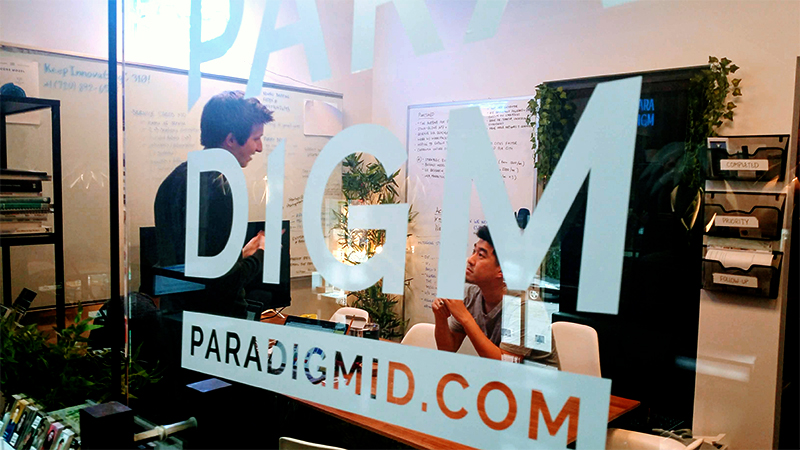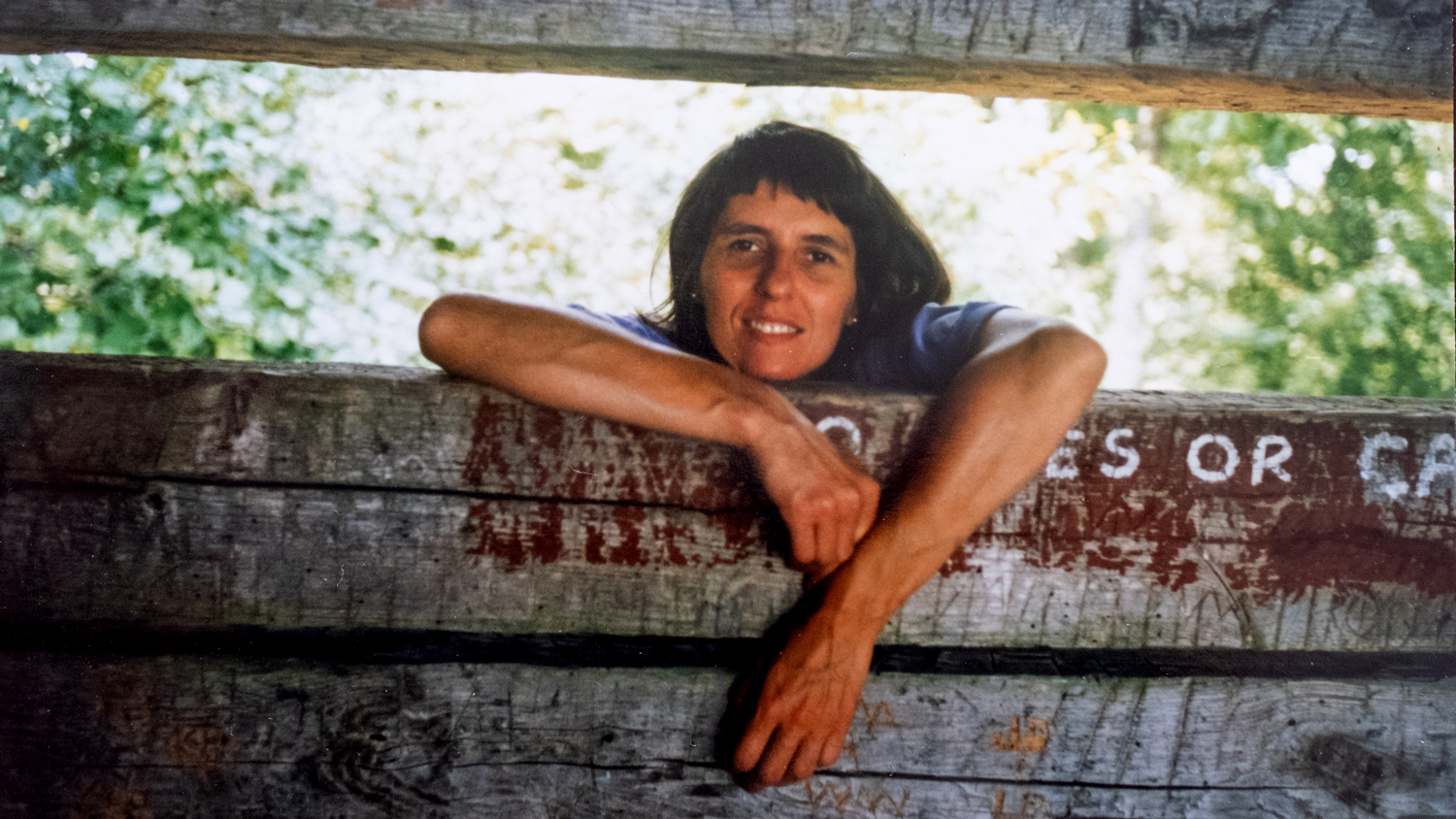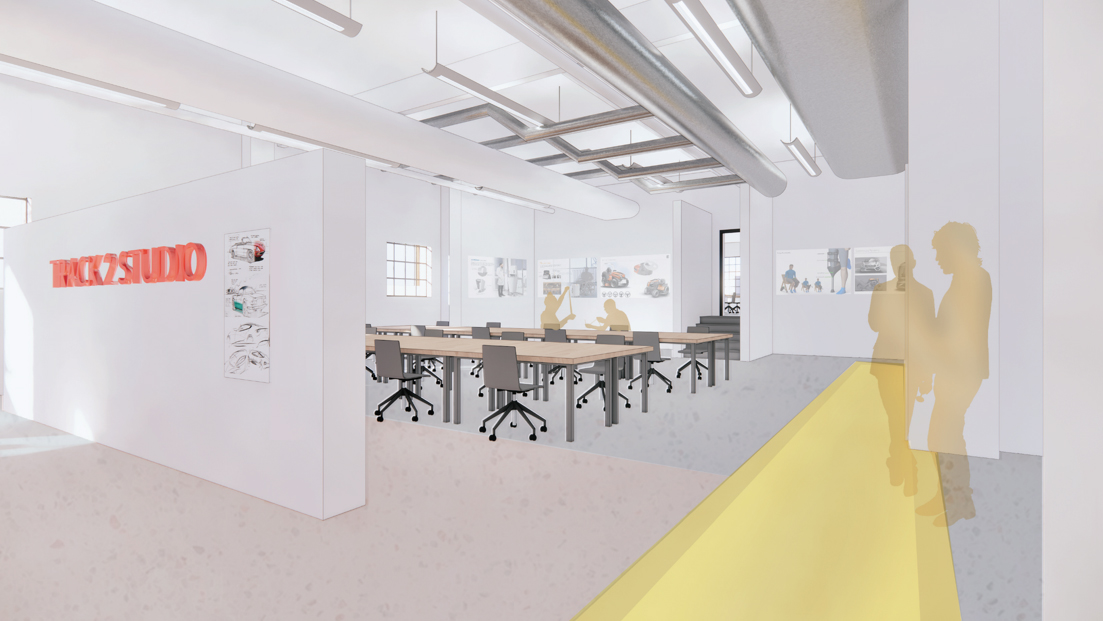Alumni Think Outside Traditional Design Firm Model
Paradigm is not a typical design firm. In fact, Ben Markoch [GD ’16] and Sunny Su [ID ’16], principals, prefer to call Paradigm an “innovation studio,” a “consortium,” or “a social movement.” Founded on a model of always challenging the status quo, Paradigm is made up of a global network of designers, consultants, and business strategists working together to help clients achieve their growth goals. Or, as Su puts it, Paradigm is “a company that starts other companies.” “We always hear the statistic that 90 percent of startups fail… and the big reason we believe that it is their lack of focus on design,” says Su. “We’re helping people plan how they can use design to their advantage to help build their business,” says Markoch.
The biggest mistake startups and corporations make, Su says, is “hiring one designer and expecting them to do everything from information design to interface design to interaction design. It’s almost near impossible for everyone to be equally good at all of those skills at one time.” By having a large team of designers, contractors, and freelancers (Su claims there are over 70 Paradigm team members worldwide), each person can focus on what they do best. “When you leverage everyone’s best skills, not only are people most passionate about them, they are really good at them,” says Su.
![Ben Markoch [GD ’16] and Sunny Su [ID ’16]](https://design.ncsu.edu/wp-content/uploads/2019/02/Ben-Markoch-GD-’16-and-Sunny-Su-ID-’16.jpg) Pulling from such a large talent pool is essential for Paradigm because most of their projects are multidisciplinary. Recently, team members designed a website, logo, app, and water monitoring device for the Enactus company Remora. Su explains that Remora is “a program to bring water quality and sustainability back to the island of Puerto Rico” by monitoring bodies of water across the island and providing real-time access to the data. The studio is also working with Neurun, an app that helps runners prepare for endurance events around the world.
Pulling from such a large talent pool is essential for Paradigm because most of their projects are multidisciplinary. Recently, team members designed a website, logo, app, and water monitoring device for the Enactus company Remora. Su explains that Remora is “a program to bring water quality and sustainability back to the island of Puerto Rico” by monitoring bodies of water across the island and providing real-time access to the data. The studio is also working with Neurun, an app that helps runners prepare for endurance events around the world.
Locally, Paradigm has teamed up with the Institute for Emerging Issues; the City of Raleigh’s Innovate Raleigh Summit; and the Museum of Life and Science in Durham, North Carolina.
“Our big vision is that through this organization and all the initiatives we start, that we’re able to participate in realizing humanity’s best future.” —Sunny Su
For each of their clients, Markoch and Su want to maximize value, delivering a product or service, or both, that will help their client achieve success. But, on a larger scale, Su says, “our big vision is that through this organization and all the initiatives we start, that we’re able to participate in realizing humanity’s best future.” Markoch credits the College of Design with preparing them for their current roles by “encouraging us to look for the real sharable valuable meaning in things.”
 Su says that the College of Design’s emphasis on research and process prepared him for his current work, which he sees as being at the “intersection of design and strategy.” In fact, Su didn’t realize until attending the College’s Design Camp as a high school student that design was what he wanted to pursue. He says he was interested in computer graphics, coding websites, and designing apps, but thought that meant he should study engineering, a field that didn’t appeal to him. “When I discovered design, it was like this major that was made for me,” Su says. During his senior year he realized “that design fits into a larger system and that system is business and society.” Winning the LuLu eGames, Su says, “was proof to me that design had a place in the bigger world, a very tangible place. Because the one thing that made us the most different from the other projects wasn’t what we worked on but how we worked on it.”
Su says that the College of Design’s emphasis on research and process prepared him for his current work, which he sees as being at the “intersection of design and strategy.” In fact, Su didn’t realize until attending the College’s Design Camp as a high school student that design was what he wanted to pursue. He says he was interested in computer graphics, coding websites, and designing apps, but thought that meant he should study engineering, a field that didn’t appeal to him. “When I discovered design, it was like this major that was made for me,” Su says. During his senior year he realized “that design fits into a larger system and that system is business and society.” Winning the LuLu eGames, Su says, “was proof to me that design had a place in the bigger world, a very tangible place. Because the one thing that made us the most different from the other projects wasn’t what we worked on but how we worked on it.”
Markoch was attracted to design because it allowed him to combine many interests. “At the end of the day,” he says, “the reason I decided to choose design was because this was a way I could learn something new everyday with every person I worked with.”
To current students, Markoch and Su suggest taking advantage of all of NC State’s and Raleigh’s resources.
“Branch out,” Su says. “Start exploring the rest of NC State. There are so many resources there… There’s the Entrepreneurship Initiative. There’s the business school. There’s so many things that even if the College isn’t doing partnerships with, you as a student can start these really inspiring projects.” Markoch adds, “Come down to HQ Raleigh. Everyone in Raleigh has been incredibly friendly when it comes to talking to people. And students have the unique advantage of being able to say, ‘I just want to talk to you about what you do. I’m a student, and I want to learn.’ Our hope is that we’re able to do more with students to help them see what this is like because there’s so much opportunity and people in this community are so willing to share advice and insights.”
Staci Kleinmaier is a professional writer and photographer in Apex, North Carolina. She uses words and images to tell stories. To see her work, visit www.stacikleinmaier.com.
- Categories:



